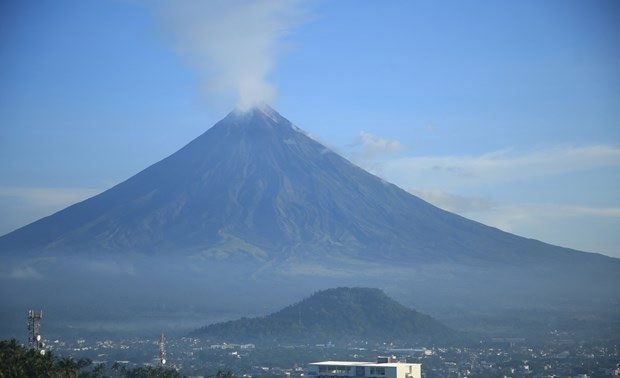Philippine seismic researchers have reported at least one volcanic earthquake in the past 24 hours, with red-hot rocks falling from Mayon Volcano in Albay province, Central Philippines.
Philippine officials stated that more than 12,800 people have been evacuated to shelters, primarily from agricultural villages at or near the volcano’s base.
Health Secretary of the Philippines, Teodoro Herbosa, mentioned in a press conference on Sunday: “There are simultaneous health risks when near the eruption due to inhaling sulfur dioxide gas or particulate matter from ash.”

Mayon Volcano is erupting ash and large rocks. (Photo: AFP).
Mayon Volcano, located about 330 km from the capital Manila, is considered one of the most active and unstable volcanoes among the 24 active volcanoes in the country.
The Philippine Institute of Volcanology and Seismology reported that rocks were dislodged from the crater and expelled from the volcano due to molten material beneath the surface.
Philippine volcanologists noted that rocks are falling in areas up to 2 km away, and sulfur dioxide emissions have tripled as of Saturday.
A five-level alert system for the volcano was raised from Level 2 to Level 3 the previous Thursday, with authorities warning of potential respiratory illnesses due to smoke inhalation.
“With Albay currently in a state of disaster due to Mayon’s activity, we remind everyone to follow the recommendations and evacuation guidelines from local authorities,” President Ferdinand Marcos of the Philippines stated on Saturday.
Earthquakes and volcanic activity are common in the Philippines as the country is located on the Pacific Ring of Fire, where tectonic plates collide.
The most powerful eruption in the Philippines in recent decades occurred at Mount Pinatubo in 1991, resulting in over 800 fatalities. That disaster produced an ash cloud that traveled thousands of kilometers.



















































